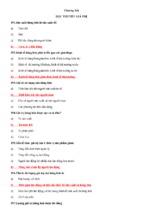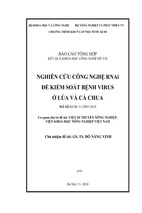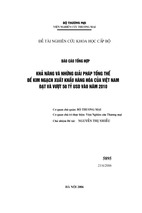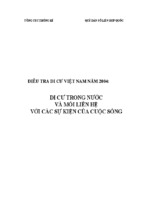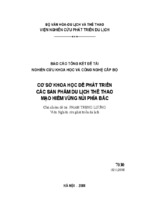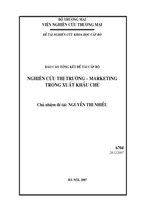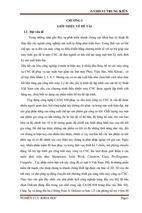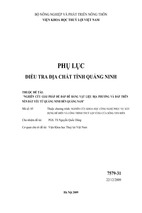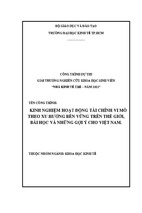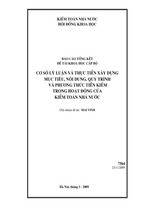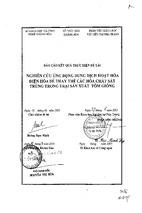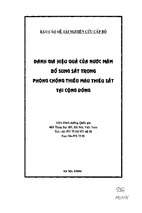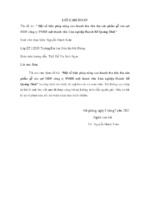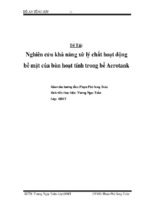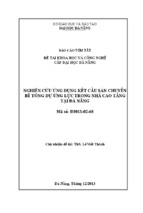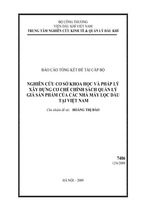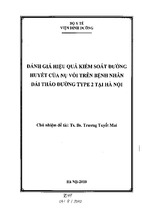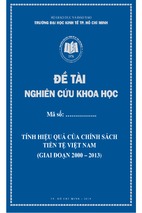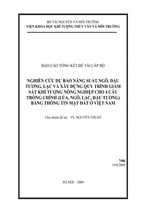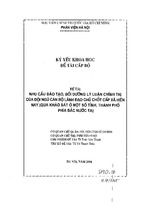AN INVESTIGATION INTO THE IMPACT OF EXTRINSIC MOTIVATION…….
Table of contents
Chapter 1: INTRODUCTION..........................................................................................1
1.1 . Rationale:.....................................................................................................................1
1.2. Aim of research: ...........................................................................................................4
1.3. Significance of study: ...................................................................................................4
1.4. Scope of study: .............................................................................................................4
Chapter 2: LITERATURE REVIEW .............................................................................6
2.1. Definition of motivation ...............................................................................................6
2.2. What is the motivated learners? ...................................................................................7
2.3 . Classification of motivation: .......................................................................................7
2.4. Definition of extrinsic motivation ...............................................................................8
2.5. The role of motivation in the process of learning English of high school students .....8
2.6. The role of extrinsic motivation in the process of learning English of students .........9
2.6.1.Teachers ‘ characteristics, methodology .................................................................9
2. 6.2. Cooperative/ Communicative activities ..............................................................12
2.6. 3. Feedback .............................................................................................................15
2.6.4. Test .......................................................................................................................16
2.6.5 . Learning environment: ........................................................................................17
2.6.6 Teaching aids ........................................................................................................18
2.7. The effects of extrinsic motivation on the process of learning English of students at
high schools .......................................................................................................................20
2.7.1. The positive effects of extrinsic motivation on high school students’ English
learning process..............................................................................................................20
2.7.2 . The negative effects of extrinsic motivation on students’ English learning
process............................................................................................................................21
2.8 .Methods for motivating students ................................................................................23
2.8.1. Create a stimulating, supportive class atmosphere ..............................................23
2. 8.1.1. Organize various, interesting activities.........................................................23
2.8.1.2. Use flexible, diverse teaching aids ................................................................25
2.8.2. Teachers renovate teaching method, teaching style and create good relationship
with students...................................................................................................................26
CAO NGUYỄN ANH THƯ
ACADEMIC YEAR 2010 - 2014
AN INVESTIGATION INTO THE IMPACT OF EXTRINSIC MOTIVATION…….
2.8.3. Adapt the curriculum appropriately for students’ abilities , preferences, styles.27
2.8.4. Give constructive, positive feedback ...................................................................28
2.8. 5 . Help weak students improve their marks...........................................................29
Chapter 3. METHODOLOGY.......................................................................................30
3.1. Subjects of study.........................................................................................................30
3.2. Scope of study ............................................................................................................30
3.3 Data collection ............................................................................................................30
3.3.1. Questionnaire .......................................................................................................30
3.3.2 Interview ...............................................................................................................31
3.3.3. Observation ..........................................................................................................31
3.4. Data analysis..............................................................................................................31
CHAPTER 4. FINDING AND DISCUSSION ..............................................................32
4.1. Students’ and teachers’ perception of the role of extrinsic motivation in the process
of learning English of students ..........................................................................................32
4.1.1. Students ‘ reasons for learning English................................................................32
4.1.2. Students’ and teachers’ perception of the role of extrinsic motivation in the
process of learning English of students..........................................................................34
4.1.2.1. Students’ and teachers’ perception of role of organized activities in English
classes .........................................................................................................................35
4.1.2.1.1. The frequency of using kinds of activities in English classes................35
4.1.2.1.2. Students’ attitudes towards activities organized in English classes........39
4.1.2.1.3. Characteristics of organized activities in English classes .......................41
4.1.2.1.4. Students’ and teachers’ difficulties in organizing and conducting
communicative/cooperative activities .....................................................................45
4.1.2.1.5. Teachers’ difficulties in organizing communicative activities, .............47
4.1.2.1.6. The role of activities in English classes in motivating high school
students ....................................................................................................................48
4.1.2.2. Students and teachers perception of role of feedback and rewards in the
process of learning English of high school students...................................................49
4.1.2.3. Students and teachers’ perception of the role of English tests in the process
of learning Englsih of high school students................................................................54
CAO NGUYỄN ANH THƯ
ACADEMIC YEAR 2010 - 2014
AN INVESTIGATION INTO THE IMPACT OF EXTRINSIC MOTIVATION…….
4.1.2.3.1. Types of tests and their level of difficulty..............................................54
4.1.2.3.2.The importance of English tests towards students ...................................56
4.1.2.4. The role of homework in fostering learning motivation for high school
student .........................................................................................................................57
4.1.2.5. The role of teacher in motivating students ....................................................58
4.1.2.6. The role of teaching aids and learning environment in the process of learning
English of high school students ..................................................................................62
4.1.2.7. The role of curriculum in the process of learning English of high school
students .......................................................................................................................64
4.2. The effects of extrinsic motivation on the process of learning English of students at
high schools .......................................................................................................................66
4.2.1. The positive effects of extrinsic motivation on high school students’ English
learning process..............................................................................................................66
4.2.2. The negative effects of extrinsic motivation on students’ English learning
process............................................................................................................................73
4.3. Students’ and teachers’ perception of ways of motivating students to learn English
...........................................................................................................................................77
Chapter 5: CONCLUSION AND IMPLICATIONS ...................................................84
5.1. Summary....................................................................................................................84
5.2. Implication.................................................................................................................85
5.2.1. Teachers ...............................................................................................................85
5.2.2. Students ................................................................................................................87
5.2.3. Facilities and teaching and learning equipment...................................................87
5.3. Limitations..................................................................................................................88
5.4. Suggestions for further study......................................................................................88
REFRENCES ...................................................................................................................90
APPENDICES..................................................................................................................95
CAO NGUYỄN ANH THƯ
ACADEMIC YEAR 2010 - 2014
AN INVESTIGATION INTO THE IMPACT OF EXTRINSIC MOTIVATION…….
List of figures
Figure 4.1: The frequency of using the activities in English classes ................................35
Figure 4.2 : The frequency of using types of activities in English classes........................36
Figure 4.3 : Students’ attitude towards activities organized in English classes ...............39
Figure 4.4 : Students’ the most wanted activity in English classes...................................39
Figure 4.5: Characteristics of motivated activities ............................................................42
Figure 4.6 : Characteristics of unmotivated activities .......................................................42
Figure 4.7 : Students’ involvement in activities in English classes ..................................44
Figure 4.8: Students’ difficulties in carrying out cooperative activities ...........................45
Figure 4.9: Students’ difficulties in conducting communicative activities .......................46
Figure 4.10 : The role of activities in English classes in motivating high school students
...........................................................................................................................................48
Figure 4.11: The frequency of giving feedback to students ..............................................49
Figure 4.12: Types of feedback for students’ correct answers ..........................................50
Figure 4.13 : Teachers’ ways of giving feedback for students’ incorrect answers ...........53
Figure 4.14: Types of English tests at high schools in Hue ..............................................54
Figure 4.15: The level of difficulty of tests at high schools..............................................55
Figure 4.16: The importance of English tests towards students.......................................56
Figure 4.17 : Students’ perception of the level of necessity for doing homework ...........57
Figure 4.18 : The importance of external factors towards high school students’ success in
learning English .................................................................................................................58
Figure 4.19 : Students’ perception of the extent of influence of external factor on their
English learning process....................................................................................................59
Figure 4.20 : English teachers’ characteristics that motivate students most .....................61
Figure 4.21: The frequency of using teaching aids in English classes..............................63
Figure 4.22 :Content(s) in the curriculum that teachers focus on teaching most..............64
Figure 4. 23: Students’ awareness of the influences of positive feedback on them.........68
CAO NGUYỄN ANH THƯ
ACADEMIC YEAR 2010 - 2014
AN INVESTIGATION INTO THE IMPACT OF EXTRINSIC MOTIVATION…….
Figure 4.24 : Teachers’ awareness of the effects of positive feedback on students’ success
in learning English.............................................................................................................69
Figure 4.25: The positive effects of extrinsic motivation on students’ English learning
process ...............................................................................................................................72
Figure 4.26: Effects of low results of tests on students.....................................................74
Figure 4.27: Impact of negative feedback on the process of learning English of high
school students...................................................................................................................75
Figure 4.28: Essential changes that make students be more interested in learning English
...........................................................................................................................................78
Figure 4.29: Ways of creating a stimulating, supportive class atmosphere ......................79
Figure 4.30: Teachers’ ways for drive students to do homework .....................................80
Figure 4.31 : Teachers’ ways of helping students who get low marks in English tests. ...81
CAO NGUYỄN ANH THƯ
ACADEMIC YEAR 2010 - 2014
AN INVESTIGATION INTO THE IMPACT OF EXTRINSIC MOTIVATION…….
List of tables
Table 4.1: Students’ reasons for learning English.............................................................33
Table 4.2 : Teachers’ difficulties in organizing communicative activities .......................47
Table 4.3:Teachers’ ways of giving feedback for students’ correct answers....................51
Table 4.4: Ways of giving feedback for students’ incorrect answers ...............................52
Table 4.5: Negative effects of extrinsic motivation on high school students’ English
learning process. ................................................................................................................76
CAO NGUYỄN ANH THƯ
ACADEMIC YEAR 2010 - 2014
AN INVESTIGATION INTO THE IMPACT OF EXTRINSIC MOTIVATION…….
ABTRACT
The research “An investigation into the impact of extrinsic motivation on the
process of learning English of students at some high schools in Hue” is performed with
an eye to providing high school teachers and students with a deep, comprehensible view
of the role as well as the positive and negative effects of extrinsic motivation on the
process of learning English of high school students. To fulfill the above purposes, the
research paper consists of five chapters .Chapter 1 provides background information,
rationale , the aim of the research and then states three research questions. In the chapter
2, the relevant theories and documents of the previous researchers on this filed are
selected carefully and cited appropriately for the content and scope of this study. Next, in
the chapter 3, the data for this research are gathered from the questionnaires, interviews
and observation sheets. Questionnaire is distributed to 100 students and 15 teachers. The
results taken from questionnaire are clarified and reinforced through in-depth interviews
with teachers and students and observation sheets. The study is continually developed in
the chapter 4. The first section focuses on analyzing the information and discussing
involving the role of extrinsic motivation in the process of learning English of high
school students. The aim of second section is to get an overall view of the positive and
negative effects of extrinsic motivation on the process of learning English of high school
students. In the final section, the research provides best ways of motivating students to
learn English by synthesizing and analyzing students and teachers’ ideas of this matter.
Finally, standing firmly on these reliable foundations, the research draws out conclusion
of the role and the impact of extrinsic motivation, effective suggestions for motivating
students to learn English. Besides, implications for teachers, students are presented with
a view to fostering students’ learning motivation and enhance the efficiency of English
teaching and learning.
CAO NGUYỄN ANH THƯ
ACADEMIC YEAR 2010 - 2014
AN INVESTIGATION INTO THE IMPACT OF EXTRINSIC MOTIVATION…….
Chapter 1:
INTRODUCTION
In this chapter, the researcher will provide the rationale of the research in detail
and specifically. Also, the objectives, scope, significance of the study will be clarified
and three research questions will be put forward.
1.1. Rationale:
It is obvious that thanks to a growth in globalization and integration, English has
enhanced its popularity as an international language all over the world generally and in
Vietnam particularly. Therefore, learning English is the key to open the insight into the
world. For this reason, in Vietnam, nowadays, it comes as no surprise that learning
English arouse young people ‘s interests, especially high school and university students,
for a variety of reasons such as passing the entrance exam at University, getting wellpaid jobs, studying abroad, so on. In particular, for high school students, English is a
compulsory subject in the curriculum at schools. Specially, the current national
curriculum is divided into three majors which is quite equivalent to the majors of the
University entrance exams , which is helpful for students in choosing the majors, subjects
that they like to prepare University entrance exam and English subject maintains its
presence among chart- topping choices. Additionally, in the recent years, the text books
for high school students have a lot of remarkable changes. The text books in general, and
the English text books in particular are classified into the standard text book and
advanced text book, which partly meets the demands of boosting English skill of the
students who want to major in English in the future
CAO NGUYỄN ANH THƯ
1
ACADEMIC YEAR 2010 - 2014
AN INVESTIGATION INTO THE IMPACT OF EXTRINSIC MOTIVATION…….
However, it was observed in reality that many students still can’t find out
motivation for learning English especially extrinsic motivation . “Extrinsic motivation
refers to motivation that comes from outside an individual. The motivating factors are
external, or outside, rewards such as money or grades. These rewards provide
satisfaction and pleasure that the task itself may not provide. ( Bainbridge , 2014) for the
following reasons
For one thing, apart from the considerable changes of text books, teacher ‘s
teaching method and still has not changed considerably yet.
Although the new text books focus on teaching and practicing the four English
skills including listening, speaking, reading, writing for students, most English teachers
still only concentrate on mainly teaching vocabulary and grammar. For this reason, most
students are considered as parrots because they only know to learn by heart vocabulary
and rigid grammar rules. This is the cause of the fact that more and more high school
students tend to feel bored and sleepy in English classes because most of them can’t
almost find out any motivation for learning English.
In addition, the content and format of tests and exams aren’t compatible with the
curriculum. As mentioned above, the curriculum revolves around four skills of English ,
whereas the content of test only concentrate on principally vocabulary, grammar, a little
bit writing skills for the entrance exam at University in 2014 . Because of this, to meet
the requirements of the tests of the high school graduation and entrance exams, English
teachers to force to teach totally differently from the content of text books . According to
Minh Nhat (2010) – a prestigious journalist of Phu Nu Ho Chi Minh City Magazine, an
English teacher named Ho Dang Hong Chau at Ta Quang Buu high school , in Ho Chi
Minh city said “It is paradox that the curriculum requires teachers to teach four skills :
reading, listening, writing, and speaking , whilst fifty multiple-choice questions in the
English tests mainly focus on writing skill and grammar. There are also some sentences
including communication situations, but the students only choose the correct answers (
A, B, C or D) and don’t ask students to listen or speak”. Sharing the same point, a student
at Tran Khai Nguyen, Ho Chi Minh city expressed his view “The teachers focus on
CAO NGUYỄN ANH THƯ
2
ACADEMIC YEAR 2010 - 2014
AN INVESTIGATION INTO THE IMPACT OF EXTRINSIC MOTIVATION…….
teaching grammar, vocabulary so much , so after having finished the tests , we forgot
immediately .
In final place, many schools still have not fully equipped teaching and learning
English with necessary facilities yet. Many schools have few or no teaching aids such as
projectors, televisions, so on. In addition to this, teachers tend not to pay attention to use
pictures, songs, video clip for illustrating their lesson, making them become livelier,
more attractive, but they only tend to focus on providing essential knowledge for students
theoretically, rigidly, which bring tediousness for students in English classes
Besides, the researcher realized that extrinsic motivation plays a paramount
important part for high school students. The reason is that high school students are in the
late-adolescence, so they have a burning desire to prove themselves and want to receive
the recognition and praise from other people. According to Nakkula& Toshalis (2006,
cited in Anderman , 2009 ), “In contrast to children, adolescents become more aware of
their surrounding and able to direct their own thinking, learning and problem solving.”
Hence, they consider the study as a compulsory and necessary thing to get high marks in
tests, pass the University entrance exam, receive the admiration and respect from friends,
the love of teachers and meet their parents’ expectation. From this, it can be said that the
motivation, especially extrinsic motivation plays a crucial role in students’ English
learning success.
Last but not least, although until now, there have been a number of studies
involving “ Learner Motivation”
such as “ Factor influencing learners’ intrinsic
motivation in the process of learning” (Doan Ngoc Ai Phuong, 2010), “ An investigation
of the relationship between motivational strategies & Ss' success in learning English at
upper-secondary schools in Hue" (Ho Thi Ngoc Han, 2002) , so on ,in my hometown,
there has not study which provides updated information as well as investigates and
analyzes learner ‘s extrinsic motivation deeply yet.
For the above reasons, I decided to choose the topic “An investigation into the
impact of extrinsic motivation on process of learning English of students at some
high schools in Hue” to investigate
CAO NGUYỄN ANH THƯ
3
ACADEMIC YEAR 2010 - 2014
AN INVESTIGATION INTO THE IMPACT OF EXTRINSIC MOTIVATION…….
1.2. Aim of research:
The research was conducted with the aim of investigating the perception of
teachers and students of the role as well as the impact of extrinsic motivation on teaching
and learning English process at high schools at Hue. From this, the research make an
attempt to raise awareness of teachers of the importance of extrinsic motivation towards
students’ success in learning English and find suggestions for motivating students in
English classes. Therefore, I have chosen the topic “An investigation into the impact of
extrinsic motivation on process of learning English of students at some high schools
in Hue”.
In order to fulfill the purpose mentioned above. I hereby
make an enormous effort to seek the answers for the following questions.
1. What is teachers’ and students’ perception of the role of extrinsic motivation in
the process of learning English of high school students?
2. What is teachers’ and students’ perception of positive effects as well as
negative effects of extrinsic motivation on the process of learning English of students at
high schools?
3. How are students extrinsically motivated at English classes?
1.3. Significance of study:
It is hoped that through this research, I will get deeper insight into about the
reality of teaching and learning English at some high schools in Hue. The wonderful
thing is that , Iam thirsty for gaining better knowledge of extrinsic motivation as well as
their impact on English teaching and learning process with a view to applying them to
teaching reality reasonably and efficiently. My further desire is that this study ‘s outcome
will make small contribution towards boosting the efficiency the English teaching and
learning, which will be helpful for me as well as counterparts in teaching job in the future
1.4. Scope of study:
Extrinsic motivation in second language learning achievement has been a heated
issue attracting attention of researchers. However, unlike other researches, this study only
focuses on exploiting and analyzing the impacts of extrinsic motivation on the process of
learning English of students at high schools in Hue. Due to time limit, to implement the
CAO NGUYỄN ANH THƯ
4
ACADEMIC YEAR 2010 - 2014
AN INVESTIGATION INTO THE IMPACT OF EXTRINSIC MOTIVATION…….
study , one hundred students at Hai Ba Trung and Nguyen Hue high school and 15
teachers were chosen randomly in order to fill out questionnaire. Then, seven out of
students and three of 15 teachers were invited to interview for in-depth and valuable
information.
CAO NGUYỄN ANH THƯ
5
ACADEMIC YEAR 2010 - 2014
AN INVESTIGATION INTO THE IMPACT OF EXTRINSIC MOTIVATION…….
Chapter 2:
LITERATURE REVIEW
It can be said that extrinsic motivation isn’t a new topic. Moreover, it is
increasingly concerned and investigated by ample experts. Nevertheless, the researcher is
still thirsty for exploiting deeply the impact of extrinsic motivation on the process of
learning English of students at high schools with the aim of enhancing the quality of
teaching and learning English in high school. To fulfill the purpose above, in this part,
the researcher will focus on gathering useful, reliable experts’ and researchers ‘
information, opinions, involving this topic from a variety of sources such as books, webs,
magazines with the aim of providing the foundations as well as valuable data for my
study.
2.1. Definition of motivation
Since the emergence of conception of motivation, it has grabbed special attention
of a lot of researchers, experts on this field. The major reason is that motivation plays an
indispensable part in English learning success. Until now, there have been some various
theories of motivation.
Geen( 1982) confirmed that motivation refers to the initiation, direction, intensity
and persistence of human behavior. Apparently, motivation is the desire, determination
and willingness to do something. According to Little Wood (1984) “ Motivation is the
crucial force which determine if a learner motivation centres on the task at all, how much
energy he devotes to it, how long he preserves”. However, there are opposing views of
theories of motivation. Dornyei (2001) confirmed “ There are over 20 internationally
recognized theories of motivation with many opposing point of views”. Kong (2009) has
contrasting opinion of concept of motivation. He believed that motivation is something
like the engine and steering wheel of automobile that can moves students from boredom
to interest. This means that motivation is inner power that pushes students forward,
encourages them to study harder. Cook (1996) stated the conception of motivation for
teachers “The meaning of motivation for the
CAO NGUYỄN ANH THƯ
6
teacher is probably the interest that
ACADEMIC YEAR 2010 - 2014
AN INVESTIGATION INTO THE IMPACT OF EXTRINSIC MOTIVATION…….
something generate in students such as participant exercises, or particular songs make
students involve in class”.
Ausubel (1968) pointed out six desires or needs of human organism which
underguide the structure of motivation (1) the need for exploration; for seeing the other
side of mountain, for probing the unknown things; the need for activity, both physical
and mental; the need for stimulation, the need to be stimulated by the environment, by
the other people, or by thought and feelings; the need for knowledge, the need to process
and internalize the result of exploration, manipulation, activity and stimulation, to resolve
contradictions, to question for solutions to problems, and for self-consistent systems of
knowledge; finally, the need for ego enhancement for the self to be known and to be
accepted and approved of by others. Motivation need a lot of time. It has been seen that
“ Motivation make all students desire to learn”
Briefly speaking, it isn’t easy to find out the perfect definition for motivation.
2.2. What is the motivated learners?
According to Ur (1996) , “ Motivated learner is willing or even eager to invest
effort in learning activities or to progress.” (p.274). ”Sharing with the viewpoint, Dornyei
( 2001) pointed out “Motivated learners are keen, committed and enthusiastic learners
who has good reasons for learning, who studies with vigor and intensity, and who
demonstrates perseverance” (p.1)
2.3 . Classification of motivation:
With regard to types of motivation, Gardner and Lambert (1972, cited in Cook,
1996) identified two types of motivation including integrative, instrumental motivation .
Instrumental motivation refers to motivation which acquires language as means for
attaining instrumental goals: passing in the examination, getting place in the university,
furthering a career ( Garner, 1985)
As for integrative motivation, this type of motivation is defined as desire to
identify with and integrate with the target language culture (Ur, 1996, p. 276)
Besides, an additional division is to classify motivation into extrinsic and intrinsic
motivation.Ur (1996) affirmed that the intrinsic learners are linked to the image of the
ones who learn English for their own sake, whereas the extrinsic learners have a
CAO NGUYỄN ANH THƯ
7
ACADEMIC YEAR 2010 - 2014
AN INVESTIGATION INTO THE IMPACT OF EXTRINSIC MOTIVATION…….
motivation that is deprived from external factors.It is apparent that extrinsic motivation
comes from outside the individual.
2.4. Definition of extrinsic motivation
Extrinsic
motivation
comes
from
outward
factors
involving
rewards,
success/failure, feedback, teachers’ methodology, personality, tests, etc. That is to say,
students make an enormous effort to study hard in order not to yearn for knowledge but
gain the satisfaction or compelling rewards ‘s their parents, win teacher ‘s love, belief
and receive friends’ admiration, respect. Obviously, the aim of learning is not for
understanding but for outward rewards with a view to gaining self- esteem, admiration,
recognition.
2.5. The role of motivation in the process of learning English of high
school students
So far, many researchers proved and clarified the importance of motivation in
teaching and learning process especially language teaching and learning process. Most of
them come to the conclusion that motivation is an indispensable factor in successful
learning English
Concerning this role of motivation, Brown (2000) proved that “ It is easy to
measure that success in the task is due simply to the fact that someone is “ motivated”. It
is easy in second language to claim that a learner will be success with the proper
motivation”
Sharing with common point of view, some researchers such as Brophy (1998)
have put forward the ideas that students learn best when being motivated. When students
are motivated, they will set proper goal, invest effort, persist in goal by studying hard,
attending activities enthusiastically and achieve the goal. Furthermore, Cook (1996) also
emphasized that some learners do better than others because they are better motivation. It
is clear that students who don’t have proper learning motivation will find it difficult to
attend the class, take part in activities in English classes. Truer ( 2002) also added that
apart from English knowledge, intelligence, skill, students need to identify proper and
positive motivation. Students are often motivated for ample reasons, but in many cases,
the motivation leads to effective English learning.
CAO NGUYỄN ANH THƯ
8
ACADEMIC YEAR 2010 - 2014
AN INVESTIGATION INTO THE IMPACT OF EXTRINSIC MOTIVATION…….
To conclude, it is proved that motivation take a paramount important part in
determining the success or failure in English learning. Moreover, learner motivation
makes a utmost significant contribution towards facilitating the English teaching and
learning. Therefore, teachers need to concern about students’ motivation in English
teaching process. This means that apart from teaching job, teachers need to spend time
understanding more about students’ motivation as well as helping them identify the
proper learning motivation by coming up with interesting, original activities in English
classes, creating active, lively class atmosphere.
2.6. The role of extrinsic motivation in the process of learning English
of students
As explained above, extrinsic motivation comes from outward factors. Concerning
external incentives influencing the students’ English learning process , it can be take into
account main eight factors including
teacher ( teaching method and personality,
characteristics), feedback/ rewards, test, homework, teaching aid, curriculum, learning
environment, cooperative/ communicative activities, so on
2.6.1.Teachers ‘ characteristics, methodology
In the first place, doubtlessly, teachers play a prerequisite role in stimulating
students to study and succeed in learning English. The major reason is that apparently,
teachers take an utmost important part in enhancing students’ enthusiasm, determination,
passion towards English learning.
According to Harmer (1991), the teacher is seen as a “ motivational tool” (p.8)
who contribute to raising students’ English learning spirit up, define proper motivation
for them and support students in learning whenever students need the help of teacher.
The role of teachers changes a lot in corresponding with different English teaching
approaches such as organizer and counselor of group work, facilitator of communicative
tasks, and intervener to teach for collaborative skills. As for students, these activities
focus on interaction between student and student more than interaction between teacher
and student , which makes students feel equal roles to teacher and more comfortable to
express their capability. According to Littlewood (1981), teachers’ role are various as a
classroom manager, general observer, an instructor, a consultant, an advisor or a coCAO NGUYỄN ANH THƯ
9
ACADEMIC YEAR 2010 - 2014
AN INVESTIGATION INTO THE IMPACT OF EXTRINSIC MOTIVATION…….
communicator. Sharing the same point, Baker and Westrup (2003) claimed that
“Teachers are a model, a prompt, an organizer, an encounter and a monitor”. Teachers
model the correct answer and then ask students to repeat until they are correct and
confident about the pronunciation of a new language, He/she is regarded as a prompt that
encourages students to think about how to use the new language in an appropriate context
during the practice stage.
To begin with methodology, teachers’ teaching method has considerable effects
on learner motivation. Students are really motivated if teachers use appropriate
methodology. Therefore, for subjects in the high school curriculum in general and for
English in particular, methodology renovation is really necessary. It is greatly essential
for teachers to find out the factors that influence students’ motivation and success, then
think and select suitable teaching methods to enhance their motivation. Ho (2002) and
Harmer
(1991come to terms that teachers’ teaching method impact upon students’
learning motivation. The students can strengthen their motivation if teachers’ teaching
method is appropriate, interesting. Conversely, it is very easy for students to demotivate
if teachers have bored, repetitive methodology.
Besides, teacher characteristics play a crucial role in encouraging students’
effort and contribution in English classes. Firstly, teacher talk takes a very vital part in
teaching English for students including instruction, explanation, questions, speech
modification, type and number of questions asked and error correction.
Firstly, teacher s’ speech modification make language easier comprehend,
in turn help learner to acquire the target language. Also, “ It has been that teachers tends
to talk for about two-thirds of the available class time”. ( Nunan, 1989, p.25). Learners
don’t have chance to practice the target language. Other people believes that teacher talk
is a valuable source of comprehensible input. Teacher should be good model as the target
language user. However, if the teacher is the person mainly talking in the class will cause
boredom. Additionally, students will rarely have chance to express their ideas, learn
other students and draw out valuable lessons by themselves through teachers’ feedback.
Secondly, regarding explanation, it is sometimes seen that many teachers’
explanations simply don’t make sense. They provide some examples in which the
CAO NGUYỄN ANH THƯ
10
ACADEMIC YEAR 2010 - 2014
AN INVESTIGATION INTO THE IMPACT OF EXTRINSIC MOTIVATION…….
explanation is either confusing or wrong. As a result, students ask some further
explanation. Explanation need to be coherent, the simplest for students to understand.
Teachers’ simple, understandable explanation will help students to acquire easily the
lesson easily. For example, in vocabulary lessons, teachers’ vocabulary explanation for
students is very important. This makes students remember vocabulary more
systematically and stably. The main reason is that explanation is one of crucial eliciting
techniques in vocabulary methodology. As we know, vocabulary and grammar cannot be
essential scope of knowledge for English learning students. Besides, teacher ‘s
explanation as well as instructions are very critical to students’ activities. Hadfield (
2008) advised teachers that “ At the beginning, you will need to think out carefully how
you are going to give instructions but this will become easier and more automatic as you
go on, which helps students easier to carry out pair work, individual and group
work.activities in the class.
In case, students don’t understand teachers’ instructions, they need to try to move
a little closer to the individual and repeat the request or instruction gently. Teachers
might also add more gestures to make your meaning clearer. They should endeavour to
say things which their students are likely to understand. Be careful to reserve simplest
requests and instructions for those who seem to have most difficulty.
Thirdly, with regard to questions:Two types of questions such as referential
questions and display questions .” A display question is one to which the questioner
know the answer, whereas, a referential question is one to which the person asking the
question doesn’t know the question. Virtually questions outside the classroom are
referential questions, while in the class, display questions are used much more. Questions
that teachers put play utmost important role in motivating students. In my view,
questions are selected carefully by teachers. Teachers should try to put forward the open
questions instead of taking the questions from the textbook. However, the questions need
to be related to the content of lesson in order that it is not difficult for students to think
and find out the answers.
CAO NGUYỄN ANH THƯ
11
ACADEMIC YEAR 2010 - 2014
AN INVESTIGATION INTO THE IMPACT OF EXTRINSIC MOTIVATION…….
Furthermore, according to Nunan (1989), error corrections together with formal
instructions are language teachers’ function. The classroom interaction distinguishes the
interaction outside the classroom is the existence of error correction
Above all, teachers’ personality plays a prequisite role in motivating students.
Teachers need to practice the good dignity so that students take their teachers as their
example and follow. Additionally, a teacher having a good personality will make
students respect and more easily for students to follow their teachers. Furthermore,
teachers’ attitudes are very critical. Apart from teaching, teachers need to make an effort
to care students and understand them. Nunan (1989) advised teachers that “You may
find a small number who, whilst giving priority to their own subjects, are quite interested
in what the students are doing in their English lessons. If so you might be able to foster
this interest and use it to the advantage of your students”.That teachers remember
students’ name is a dramatical advantage. It is easy for teachers to create friendly
relationship with students, attract students ‘attention, speed up the organizing of pair and
group work. For students, it produces a secure class
As mentioned above, the teachers actually play utmost important in enhancing
students’ motivation, stimulating students to enthusiastically take part in activities in
English classes.
2. 6.2. Cooperative/ Communicative activities
According to Moore(1989), the interaction between instructor ( teacher) and
learner (student) type is so valuable in English learning. It is confirmed that learnersstudents should regularly cooperate with teacher as well as other students to learn
knowledge, behavior and experience. This interaction type plays a vital part in English
acquisition and motivates students. Therefore, apart from teaching, teacher should try to
create close, friendly relationship with students,
Together with instructor- learner interaction, the learner-learner interaction
appeared in the language class with the renovation of methodology. It is believed that the
learner-learner interaction brings a lot of benefit to learners( students) including
exchanging personal ideas, studying material and getting peers feedback. Thanks to it,
the learners can develop conversational skills and their own ability in the best way.
CAO NGUYỄN ANH THƯ
12
ACADEMIC YEAR 2010 - 2014
AN INVESTIGATION INTO THE IMPACT OF EXTRINSIC MOTIVATION…….
Learner- learner interaction, which is understood as peer interaction. They yearn to
express their capability. Additionally, Pierre (2005) also explained that “The organization
of students into small groups that have varying abilities in which all students can
participate to achieve a common goal”. As cited above, it has been apparently seen that
peer interaction is really effective strategy language learning and teaching. Peer
interaction plays a crucial part in organizing the teachers’ cooperative activities. This
concept is used widely and effectively as successful English learning and teaching.
According to Kagan (1994) cooperative activities as a particular type of active learning
in which students learn in small groups to accomplish the common learning goals.
These activities consist of pair work and group work. They make a contribution
towards promoting the students’ English learning motivation, encouraging their
creativity, minimizing the learning pressure for students, boosting the level of students’
confidence. These activities including pair work and group work help enhance students’
learning motivation, encourage their creativity. Moreover, these activities help students
minimize the pressure from study. As for group work, in an English class, the students
are divided into small groups to do the task in the limited time that teacher give to them.
In each group, students have duties to brainstorm, think about the task and finish it as
soon as possible. This means that students must know how to interact with another one
and achieve the common goal. It is obvious that group work helps students have
responsibility in their learning .Moreover, they can recognize their responsibility in their
peers’ learning. The reason is that through group work, the weaker students can learn a
lot of thing from the better ones. Thanks to the assistance of the good students, the weak
students can make considerable improvement. In addition, teacher can give useful
guidance and feedback with an eye to helping students learn better and self- assess their
progress in learning English because they can have ample chance to fill their knowledge
with support ‘s other people. The better students and teacher are actually motivation for
weaker students in English learning. At the same time, the good students can jump at
opportunity to help their friends and revise the lesson
Also, group work is considered as a type of social interaction, which helps
students establish and develop social skills, such as requesting, making suggestions for
CAO NGUYỄN ANH THƯ
13
ACADEMIC YEAR 2010 - 2014
- Xem thêm -

